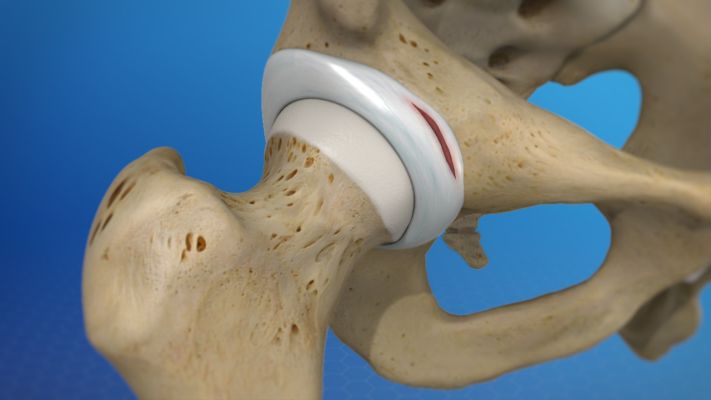If you have repeat (inguinal) hip pain and are an athlete or frequently engage in physical activity with discomfort during or after this activity, you may have a hip pinch or hip impingement. A lesion or incipient cartilage can give the first symptoms, explains the orthopaedic in Delhi.
The problem is in the case of those who are sedentary, because it is a disease that can appear silently. It has no symptoms, as it does not generate stress on the hip. Here the pain can appear late when the cartilage of the joint is totally worn, causing osteoarthritis of the hip.
This disease was discovered 20 years ago. Before its existence, most hip ailments were diagnosed as mono arthritis, causeless inflammation, idiopathic osteoarthritis, unknown cause, or joint wear and tear in late cases.
Over time, it was discovered that about 80% of these patients had an alteration in relation to the shape of the bones of the acetabulum with the femur. They already called this hip pinching.
This disease contains a lot of different pathologies, it is a set of alterations in the joint, which can be the deformity of the acetabulum or the femur.
Symptoms
The symptoms of hip impingement can be pain in the groin, discomfort in the hip area around a pain type C, after exercise or appears daily without physical activity. Patients who have been with the disease for a long time and have never had discomfort, the main sign is loss of mobility in the hip.
Also, knee pain that you don't have any findings may be from hip problems. "The knee cries for the hip," says orthopaedic doctor in Delhi.
Symptoms depend on the deformity and physical activity.
If there is a lot of deformity and a sedentary lifestyle, symptoms may start. In as much, if there is little anatomical alteration, but the patient is very active, it is more probable that the hip pinch is manifested. And finally, those who have minimal deformity and do little physical activity, it is likely that they can reach the age of 65 and their hip will never hurt.
Exams and Diagnosis
In the first instance, the orthopaedic doctor in Delhi performs a clinical examination, accompanied by the patient's symptoms, in which he will move the patient's leg and, specifically, the hip joint to assess pain and range of motion.
To make an accurate diagnosis, the traumatologist indicates a plain radiograph of the pelvis and hip, and an MRI or Artroresonance study. With the radiologist's evaluation, it is possible to determine where the lesion is, what its size is, if there is a ruptured labrum, tendon injuries, among other types of specifications.
What is the Labrum?
The labrum is the ring of cartilage, which is located on the outside of the hip joint. It works as a "glue" between the femur and the acetabulum.
A labrum tear can occur from high-impact sports or physical activity. Also due to hip abnormalities, says the orthopaedic in Delhi.
Treatment
The treatment for hip pinching in patients with little deformity, elderly and do not have a significant burden of physical activity, is palliative. That is, it seeks to reduce symptoms, before opting for hip surgery in Delhi, with anti-inflammatory drugs, kinesiotherapy, which has an effect on periarticular inflammation.
The other intermediate option is to inject the hip with anti-inflammatory drugs, such as corticosteroids. Which seeks to eliminate acute hip pain. It is a transitory treatment, because the pain will return. If you do little exercise, it will most likely last 1 to 2 years. However, in the case of active people, the hip ailment may go away for 1 month or 1 week.
Patients who have a lot of deformity, are athletes and young people, the treating doctor will probably indicate a surgery.
Hip arthroscopy
Hip arthroscopy in Delhi is a minimally invasive surgery that corrects acetabular and femoral deformities through two holes of 1 centimeter each. Damage is repaired, which is usually the labrum and cartilage. “The surgery lasts around 1 hour and a half. What we do is à la carte”, says the orthopaedic surgeon in Delhi.
In addition, in 10% of patients, the muscle area can be intervened, if there is a highly inflamed tendon that has not regenerated, a tenotomy is performed. If there are gluteal problems, the tendon is cleaned.
Recovery
Once the hip surgery in Delhi is performed, the patient must be hospitalized overnight in the clinic. However, recovery from a hip pinch is slow. During the first 2 or 4 weeks you should use canes.
The most important thing for an optimal recovery is the rehabilitation that expert hip kinesiologists must carry out.
"People who do poorly rehabilitation can have pain between 6 to 9 months. Those who do a good rehabilitation should not be more than two months with significant pain. Even so, the global rehabilitation to return to play sports, play ball -for example- is six months. If after 6 months I have significant pain, we must start looking for causes of why and treat it, "warns orthopaedic in Delhi.
In a year, the patient may have minimal or some periarticular discomfort, but should not have joint pain.




No comments:
Post a Comment